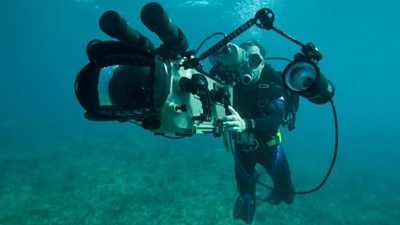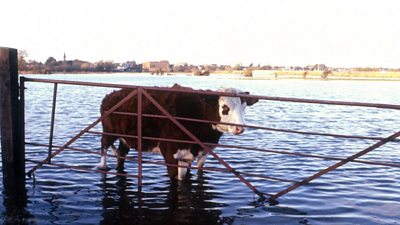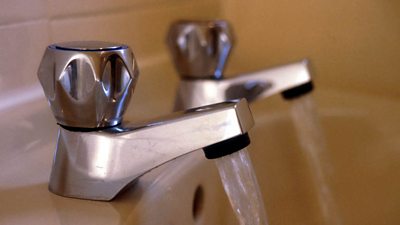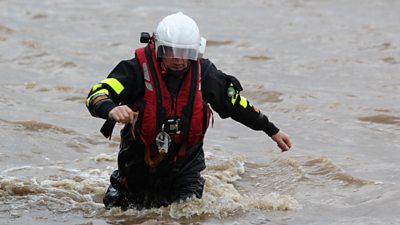A guideline for working in areas suffering from flooding and severe coastal weather in the UK and overseas.
If in place contact flood incident control centres/environment agencies/fire and rescue services to identify hazards and changing conditions.
What Can Go Wrong?
- Immediate risk of drowning or being swept away by flood water, and waves falling into drains, ditches, underwater debris, floating debris.
- Flood waters can lift manhole covers.
- Using small boats e.g. inflatable or row boats.
- Electric shock.
- Hypothermia.
- Infection – all flood water is potentially contaminated by sewage.
- Driving to flood area.
- Injury from collapse of unsafe structures, sea walls, cliffs undermined or collapsing.
Legal/���˿��� Requirements
- There are no specific legal requirements to draw to your attention; you must still apply the control measures that are relevant to your activity.
Control Measures
General Controls
- Only in exceptional circumstances enter the water. This should be planned – to and from a safe position, using adequate support to prevent loss of footing, and have a back-up plan. You must have a second person with you
- Do not set up where there is a risk of rising flood waters or sudden release of water unbalancing persons or kit.
- Never enter floodwater near substations or where it is clear that external electricity boxes are underwater. The electricity supply may not have been switched off by the local electricity supplier and this could result in electric shock or electrocution.
- Always check weather reports before and during deployment. Keep up to date with changing conditions, and re-assess the risk accordingly.
- Consider communications – can you get a signal out on location to make calls and also use GPS navigation or updates eg, Highways Agency?
- Always have an emergency plan for short notice evacuation, and ensure all comms are in place and working.
- If using small boats, get permission from skipper/owner, who should be told what is planned by the ���˿���, and who should explain local arrangements. Wear suitable lifejacket.
- Keep equipment dry and use battery equipment as preference. Use Residual current Devices (RCD’s) if using mains power.
- Wear suitable footwear and weatherproof clothing, and take a change of clothes. Plan breaks and rest periods and ensure hot food and drinks are taken. Keep an eye on colleagues.
- If in flooded fields where livestock kept, there may be chances of waste products within water.
- If driving, avoid entering water over ankle height. Check levels of water if unsure, as water depth can be deceptive e.g. using a stick. Ensure that your vehicle is fit for purpose, and that you are competent to drive in those conditions.
- Floods can undermine walls and structures – make a visual check, and keep a safe distance form any walls and waves that could be in danger of collapse, sea walls, roads, cliffs that could collapse bridges.
- If any illness after entering flood water contact your GP.
FAQs/Did You Know?
- Even in low flood waters, serious accidents have occurred from falling down uncovered drains.
- Flooded substations can pose the risk of metal structures on the grid eg lampposts becoming live. This can result in electrocution or lead to drowning when people fall into the water after the shock.
- Hypothermia can affect your ability to make correct decisions.
- Weil’s disease, or Leptospirosis, is among the most common disease transmitted to people from animals. If you experience flu-type symptoms following visit to flood area, contact your local GP.
- Safety Equipment Stores and some international bureaux have supplies of compact and discreet life jackets that can be worn without interfering with free movement or the shot.
Recommended links
Water topics
-

Water: Working On or Near
Guidance to working on or near water. -

Boats: Working on
A guide to working and filming from boats. -

Diving
A Guide to Scuba Diving and free Diving in both open water and pools. -

Floods and Coastal Surges
A guide to inland floods. -

Legionella in Premises: Control of
This guidance provides an overview of how water systems are managed in premises to minimise the risks from the Legionella bacteria. -

Water and Waste Water Management
How to manage water and waste water arising from ���˿��� activities -

Weather
The ���˿��� regularly film and record outside, exposing staff to a variety of adverse and changeable weather conditions during the course of their work. Thunderstorms pose a particular threat to those working at height outdoors, or with raised masts on broadcast vehicles. -

Wearing Your Life Jacket
Life jackets save lives and should be worn where there is a risk of entering the water unintentionally.
More from SSR
-
Your platform to record accidents, risk assessments, assurance monitoring and inspections
-
Safety Equipment Stores
Just one number to call: 020 3614 5155 -
���˿��� Safety Guidelines
An A-Z of ���˿���'s Health and Safety Guidelines -
Safety Advice Line: 0370 411 0464 Email: safety@bbc.co.uk
- A-Z of ���˿��� Safety Guidelines
- Accident Reporting and Investigation
- ���˿��� Health & Safety Policy
- Contractors (incl. vetted lists)
- Contributors
- Fire Safety
- Freelancers
- Independent Production Companies
- Risk Assessment
- Safety Alerts
- Safety Responsibilities
- Safety Training
- Sets & Premises Safety Guide
Events guidance - key links:
- Exhibitions
- General Guidance
- Indoor Location Recce Checklist
- Outdoor Location Recce Checklist
- Major Incidents & Emergency Planning
- Marketing and Promotional
- Noise Exposure
- Planning and Management
- Responsibilities
- Responsibilities Form
- Laser Lighting Effects
- Strobe Lighting
- Temporary Stages and Rostra
Health topics - key links:
- (���˿��� network only)
- Contributors Fitness to Participate
- Display Screen Equipment (DSE)
- (���˿��� network only)
- First Aid and Welfare on Location
- International Travel - Risks & Health
- Manual Handling
- Mental Health: ���˿���page
- (���˿��� network only)
- Personal Health and Wellbeing
- Pregnancy
- Psychological Trauma Support & Trauma Risk Management (TRiM)
- Tiredness and Fatigue
- Travel Health Contacts
���˿��� High Risk - key links:
- CBRN and Industrial Spills
- Covert Filming
- Crisis Management and Security Support
- Demonstrations, Protests and Crowds
- Disaster Coverage
- Door Stepping
- (���˿��� network only)
- (���˿��� network only)
- Public Order
- Safety Equipment Stores
���˿��� Journalism - key links:
���˿��� Productions - key links:
- Aerial Filming and Airfields
- Animals: Displaying and handling for performance
- Boats: Working on
- Children and Young People
- Driving
- Electrical Equipment and Systems
- First Aid and Welfare on Location
- Food Safety (Cooking and Catering)
- Remote Location Working
- Roads and Streets: Working by
- Security of Productions on Location
- Stunts
- Tiredness and Fatigue
- Unmanned Aerial Systems (UAS aka Drones)
- Vehicles: Recording in, from and around
- Working at Height: Mobile Elevating Work Platforms
- Working at Height: Tower Scaffolds
���˿��� Radio - key links:
- (���˿��� Network only)
���˿��� Security - key links:
���˿��� Sport - key links:
About this site
This site describes what the ���˿��� does in relation to managing its health, safety and security risks and is intended for those who work directly for the ���˿���.
It is not intended to provide instruction or guidance on how third parties should manage their risks. The ���˿��� cannot be held liable for how this information is interpreted or used by third parties, nor provide any assurance that adopting it would provide any measure of legal compliance. More information
Some links on this site are only accessible when connected to the ���˿��� network
